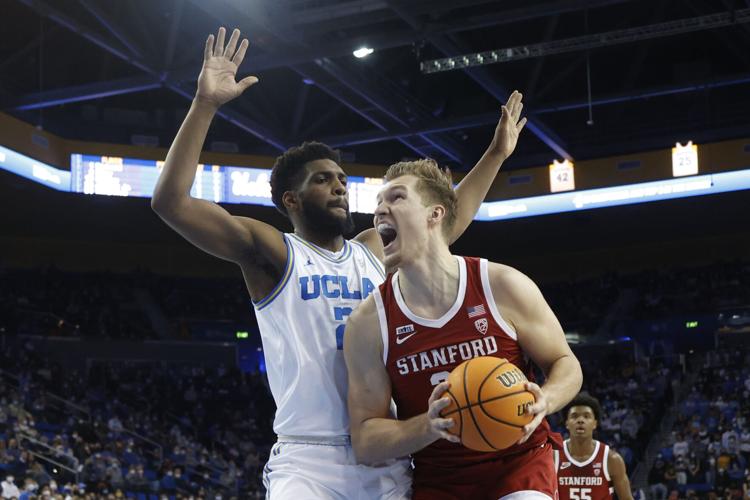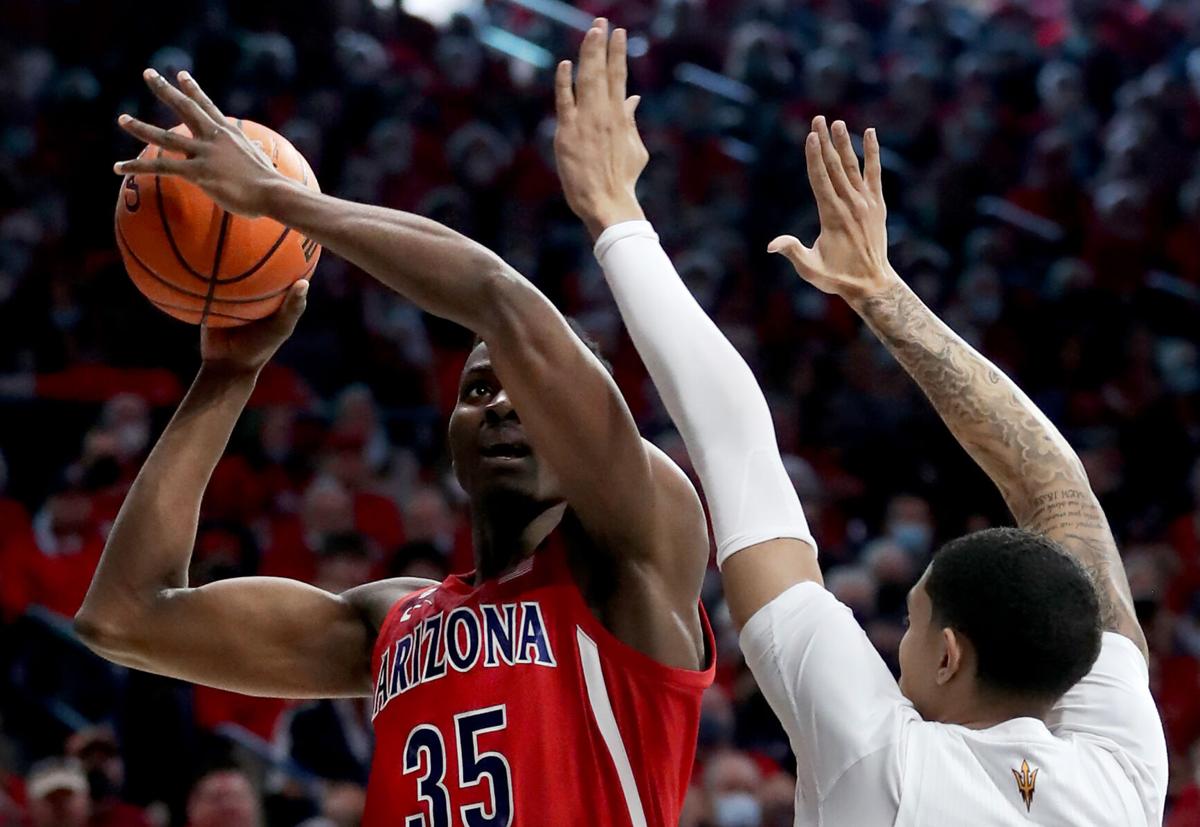After his Wildcats lost 75-59 at UCLA on Jan. 25, just nine days before a rematch Thursday at McKale Center, Arizona coach Tommy Lloyd said he wasn’t sure if it would be good to quickly get another shot or the Bruins or not.
You know, get back in the batter’s box right away while the motivation is high … or stew over it for a while, gain confidence against other teams, and make some adjustments.
But after this weekend? Eh, the Wildcats might want to wait a while.
This might not be the best of times for UA to face UCLA again.
After Arizona hobbled to a 67-56 win over ASU on Saturday while shooting just 32.2%, the Bruins throttled Stanford defensively in a 66-43 win at Pauley Pavilion, starting to look more and more like the team that reached the Final Four last season.
Stanford was coming off a 64-61 win at USC on Thursday, pushing to get in the NCAA Tournament discussion, but UCLA held the Cardinal to just 35.7% shooting from two-point range and 3-for-20 shooting from 3-point range.
This, too, in a game when the Bruins were without standout guard Johnny Juzang (COVID-19 protocols) and standout defender Jaylen Clark (concussion) while also losing forward Jaime Jaquez to an ankle injury during the game. (Early indications are that Juzang and Jaquez are likely to play Thursday).
“You can’t ask for anything more than that,” UCLA coach Mick Cronin said after the game. “The effort under the circumstances was really unbelievable.”
It was the third straight game the Bruins have held their opponents under 30% from 3-point range. Arizona shot 25.0% from 3 on Jan. 25 at Pauley, Cal hit 28.6% (6 of 21) on Jan. 27 while Stanford made just 15.0% on Saturday.

Stanford forward Lukas Kisunas is defended by UCLA forward Cody Riley on Saturday night. The Bruins routed the Cardinal 66-43.
“Defense is our secret weapon,” UCLA guard Jules Bernard told Pac-12 Networks after the Stanford game. “I think it gets us going on offense because we naturally build energy off of how we play on defense. If we’re getting steals, turning the other team over, we get a lot of points in transition and that gets sort of gets our offense going.”
The Wildcats also thrived defensively against ASU but it was more a matter of survival.
Because Arizona kept ASU to just 32.8% shooting, and scored 18 more points at the free-throw line, the Wildcats could afford to make only 3 of 23 3-pointers.
And it wasn’t really until after halftime that Arizona turned it on defensively Saturday. The Sun Devils shot 44.4% while hitting half of their 10 3-pointers in the first half, but hit just 23.5% from the field in the second half.
“I thought we were a little more attentive” after halftime, Lloyd said. “We’re a great defensive team and to be able to hang your hat on your defense during a night or a stretch of the season when your offense is struggling like it is, it’s really important to competing for championships and obviously, that’s what we want to do.”
But to beat UCLA this time, the Wildcats may need both that sort of defense and much better shooting than the season-low 30.7% they put up overall from the field in Pauley Pavilion.
Maybe increased recognition will help. Center Christian Koloko said both UCLA and ASU threw out a different brand of defense at them, making life particularly hard on point guard Kerr Kriisa and wing Bennedict Mathurin.
“UCLA was doing the same thing, pressuring the ball on the perimeter,” Koloko said after the ASU game. “We gotta watch this game again and get ready for next week.”
There are other things to consider, too.
Between the Wildcats’ loss to UCLA and the win over ASU, Arizona shot a collective 32.5% from two-point range and 30.0% from 3, struggling both from deep and around the basket.
The inside struggles can easily be linked in part to forward Azuolas Tubelis, whose sprained ankle clearly is not fully healed. Tubelis shot just 31.3% over the UCLA and ASU games after sitting out the Jan. 23 game at Cal with the injury.
“This is kind of coming at a tough time of the year for him where it’s maybe hard to have a lot more live practices and full contact type stuff,” Lloyd said. “But Zu’s an amazing person. ... he’s a really special guy, high character and what he’s trying to do for us right now, I’ll tip my cap to him.”
Then there are potential confidence and shot selection issues all over the court.
“I know these guys don’t miss on purpose — and when they miss it, they feel worse than you do. So you’ve just got to kind of hang with it sometimes,” Lloyd said. “And the thing that we have to evaluate is the type of shots that our offense is getting us and the types of decisions we’re making on those shots.
“Are we are we turning down good shots to take tougher shots? And who do we want taking those shots? Where do we want to get them? That’s stuff we’re continuing to look at and as you get deeper in conference seasons, teams scout more and they make adjustments, so we’ll have to kind of make our own adjustments to that.
“And sometimes the adjustment is just doubling down on what you already do. So we’ll figure that out this week.”






